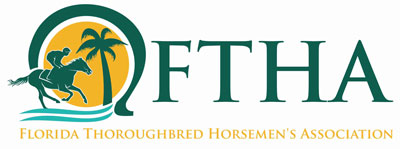May 21, 2012
Every year as the self-proclaimed Czar of Winter Simulcasting, I track the wagering dollars per race on the five strongest signals that operate during the winter when Gulfstream is racing. I have been performing this exercise that probably no one cares about but me since some media types wrote about the continually deteriorating racing taking place at Gulfstream Park. The year was 2000, and I was curious where the best racing was actually taking place and I cleverly figured that I could find out by tracking the daily average out-of-state wagering per race from the top tracks. I figured that the fans would “vote” with their money on the most popular signal, and therefore, the best simulcast signal.
Gulfstream had the highest wagering per race on every day they ran, and have pretty much done the same thing for the twelve years that followed. Oh, there was a close call a few years ago when Santa Anita seemingly edged its sister track, winning the weekdays and overall total wagering per race while Gulfstream, as always, prevailed on Saturday and Sunday. Someone reminded me that Flor-i-duh had not yet mastered net pool pricing (we were the last state to do so) and that I wasn’t counting the separate pool wagering that, for instance, Canada bet into. When I added this wagering to Gulfstream’s previous totals, I now had a new/old winner of the winter simulcasting war. I immediately disqualified Santa Anita and moved Gulfstream up into the top spot once again.
For a few years, I ended my winter simulcasting exercise on the weekend when the Florida Derby was run. I soon realized that I wasn’t being fair to those tracks that hadn’t had the opportunity to run their Derby and to therefore be the beneficiary of those larger handle numbers that those Derbies and the Wood brought to their respective tracks. Gulfstream’s handle numbers declined rather sharply after they ran the Florida Derby as horsemen scrambled to get their horses to the 800 pound gorilla in Lexington or to the now slots emporium in the big city. Even with this decline in handle, Gulfstream still managed to have the highest average wagering per race while they sat idly by while these lesser races were being run.
While Gulfstream has had the best average simulcasting numbers per race each year, the tracks that have finished second have been the Fair Grounds, Aqueduct and Santa Anita. If memory serves me the Fair Grounds was second in 2000 and maybe 2001, but after that they fell immediately behind the other two tracks. About five years ago, the owner of the Fair Grounds stated that none of their properties would ever publish attendance and handle numbers again, unless they were really, really good….. like might happen on a Friday night with entertainment.
I know you are wondering (if you read this far) how Gulfstream did when their whole, long, 87 day race meet was analyzed? By analyzing the entire meet, there was no favoritism that could be applied to the handle numbers to aid Gulfstream or hinder another track’s numbers by the Czar of Winter Simulcasting. I even used Oaklawn’s Racing Festival handle numbers that occurred a week after Gulfstream Park had closed. I did this by dropping the previous week’s handle numbers from Oaklawn and replacing them with handle numbers from their Racing Festival.
Once again, the Lion of Winter, Gulfstream Park, had the best average wagering per race on every day of the week. Some of you may have looked at the accompanying chart and said what about Wednesday when Santa Anita seemed to beat Gulfstream’s average per race handle, $500,223 to $481,275? The rules of winter simulcasting are that at least two tracks must operate on the same day, which is why we didn’t include Tuesdays in our chart, a day which was run regularly by Tampa, but only by Tampa. Likewise a track must have operated on a certain weekday at least twice in order to have their numbers counted, and if a track does so and still beats Gulfstream’s average per race handle, the number of required days may be increased to three. In other words, both the Wednesday numbers from Santa Anita and Oaklawn are not counted on the final simulcast results for weekdays, which again shows Gulfstream being the most popular signal on every day of the week.
On the total average wagering handle per race, Gulfstream, as it has done for all 13 years of this study, finished first, but both Aqueduct and particularly Santa Anita showed strong gains over last year with Aqueduct improving almost $57,000 per race and Santa Anita jumping a whopping $188,000 per race after their dismal 2011 race meet. Gulfstream slipped back $11,000 per race from their average for the 2011 meet, and Tampa Bay Downs fell $46,000 from their 2011 average. As usual, Gulfstream, even though they run many more races than the other tracks, again exhibited their dominance on racing’s strongest day, Saturday.
954.457.3516 | info@floridahorsemen.org



